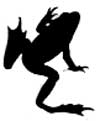|
GLACIER National Park |
 |
Appendix (continued)
Reptiles and Amphibians of Glacier National Park
Note: This check list is based upon actual specimens in the Park and other collections, according to Dr. Royal Brunson, Montana State University.
Reptiles
Great Basin Garter Snake, Thamnophis elegans vagransA large garter snake of mountainous areas, usually with large spots.
Great Plains Red-sided Garter Snake, Thamnophis ordinoides parietalis
Dorsal stripes varying from yellow to blue or black. Usually found near water.
Hypothetical List:
Rubber Boa, Charina bottae utahensisMay occur in rock slides or, possibly, in forested areas, on either side of the Divide.
Gopher Snake, Pituophis catenifer sayi
May occur along eastern boundary (Great Plains).
Yellow-bellied Blue Racer, Coluber constrictor mormon
May occur on eastern boundary of Park along border of Great Plains.
Painted Turtle, Chrysemys picta
May occur in ponds and sluggish waters from Upper Sonoran Zone to Canadian Zone.
Western Skink. Eumeces skiltonianus
May occur in Transition Zone along western border of Park.
 *Northern Alligator Lizard, Gerrhonotus coeruleus principis
*Northern Alligator Lizard, Gerrhonotus coeruleus principisMay occur in Transition Zone along western border of Park.
Amphibians
Tiger Salamander, Ambystoma tigrinum melanostrictumGround color either black or bluish-black, with large spots or blotches of yellow.
Long-toed Salamander, Ambystoma macrodactylum
Ground color black or dark brown; wide band of yellow extends from back of head to tip of tail.
Northwestern Toad, Bufo boreas boreas
Widely distributed over entire Park. (Also known as Columbian, Northern, or Western Toad.)
 *Western Spotted Frog, Rana pretiosa pretiosa
*Western Spotted Frog, Rana pretiosa pretiosaWidely distributed over entire Park. (Also known as Western or Pacific Frog.)
Green Frog, Rana clamitans
One specimen, from Bowman Lake. (Chicago Natural History Museum)
Tailed Frog, Ascaphus truei
Should be fairly common, although it is not often taken.
Pacific Tree-toad, Hyla regilla
Small size and disks on fingers and toes identify this species. Common throughout Park.
*Illustrated

|

|
|
|
|
Last Modified: Sat, Nov 4 2006 10:00:00 pm PST |


